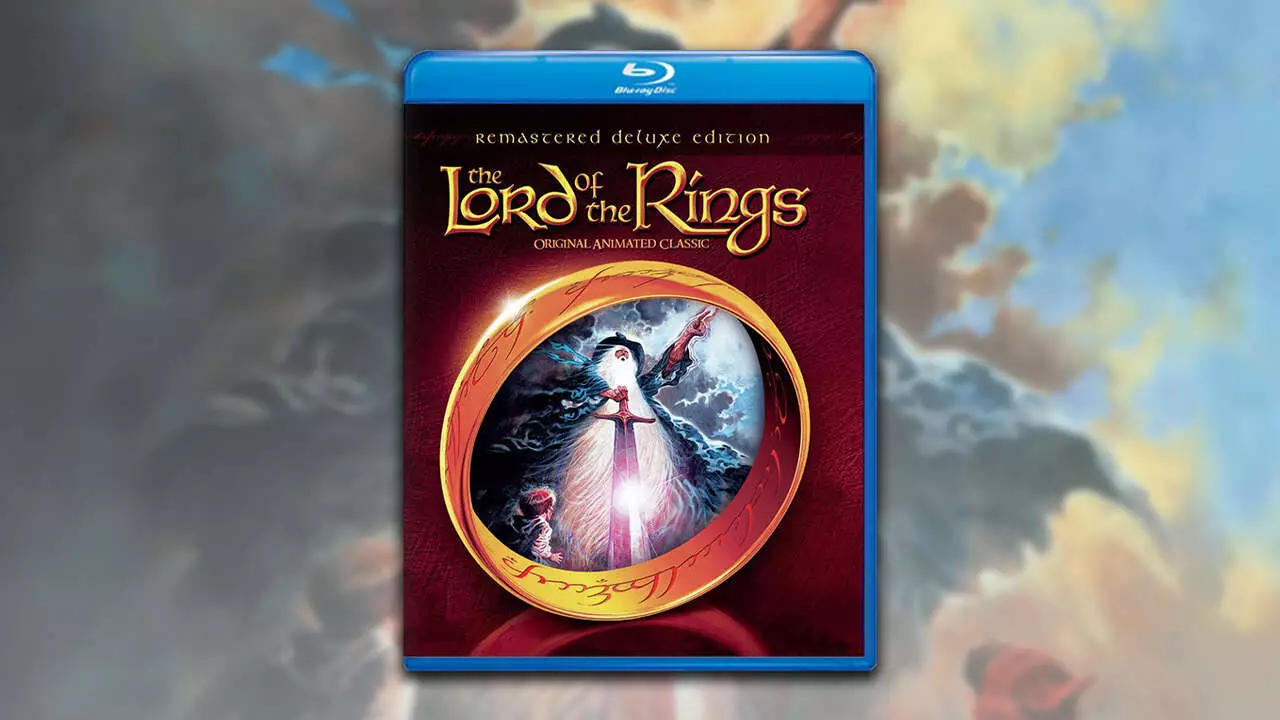In a world where nostalgia often reigns supreme, the announcement of a newly remastered Blu-ray edition of *The Lord of the Rings: Animated* is a monumental event for both fans of the franchise and animation enthusiasts. Fifteen years after its last Blu-ray outing, this Remastered Deluxe Edition is set to arrive on June 24, offering a vivid experience that pays homage to Ralph Bakshi’s groundbreaking vision from 1978. It’s a chance for a new generation to dive into a richly animated take on J.R.R. Tolkien’s mythical world, as well as an opportunity for long-time fans to view the film with the clarity and visual fidelity that modern technology affords.
This remastered edition boasts an impressive 1080p resolution that brings the hauntingly ethereal landscapes of Middle-earth to life in startling detail. For those who have experienced the previous versions, the upgrade feels almost revolutionary. Moreover, featuring a robust 16:9 aspect ratio and Dolby TrueHD English 5.1 Surround Sound, the technical enhancements ensure that even the most subtle aspects of this animated genius can be appreciated anew. It was only in recent years that the option for a reasonable, localized Blu-ray became available, broadening access to an important piece of cinematic history for fans who may not wish to delve into region-free imports.
Understanding the Cultural Significance
When it first hit theaters in 1978, *The Lord of the Rings: Animated* was met with a blend of skepticism and cautious optimism. The production was ambitious, condensing a sprawling narrative into a mere 133 minutes, which inevitably left some fans disenchanted. Yet, the film took on a life of its own, slowly but surely climbing from being a polarizing interpretation to a cherished cult classic.
What sets this adaptation apart is its willingness to embrace experimental storytelling techniques. Bakshi’s groundbreaking inclusion of rotoscoping—a method of tracing over live-action footage to create animation—introduced new dimensions to the medium. This choice allowed dramatic sequences to reflect an almost lifelike quality, an artistry that many animated films have yet to replicate convincingly. It remains an excellent jump-off point for discussions about how animation can bridge the gap between visual artistry and narrative expression, marking a clear path for future adaptations, including Peter Jackson’s acclaimed live-action trilogy.
The Legacy of an Underappreciated Classic
As time has proven, *The Lord of the Rings: Animated* continues to resonate across generations, drawing new cohorts into its spellbinding world. However, its journey has not been without hurdles. The film didn’t receive a sequel despite its initial box office success—over $32 million against a budget of just $4 million—and while adaptations such as *The Hobbit* and *The Return of the King* emerged as animated musicals, they failed to capture the same nuanced depth and grandeur.
This leads to an interesting dialogue about the evolution of the animated genre. Animated adaptations that followed Bakshi’s interpretation were often sanitized, tailored for younger audiences, which stripped the original works of their intricacies. The contrast of styles provides fertile ground for debate regarding what constitutes a successful adaptation. While the 1978 animation comes complete with its oddities—some scenes border on the bizarre—the flaws contribute, rather than detract, from its charm. It’s the cinematic risks and eccentricities that make it memorable, reminiscent of a bygone era in animation, akin to the similarly ambitious, though ultimately flawed, live-action *Super Mario Bros.* movie from 1993.
Between Innovation and Tradition: The Future of Middle-earth Animation
Fast forward to the release of *The War of the Rohirrim*, which attempted to continue the legacy of animated storytelling in Tolkien’s world, albeit with mixed results. Set centuries before the events of Jackson’s films, the lackluster reception raises questions about the art of adaptation and whether the magic that graced Bakshi’s film can ever be recaptured. The stark difference between Bakshi’s innovative style and the somewhat uninspired visuals of contemporary projects, despite their technical advancements, is a tough pill for devoted fans to swallow.
As we revel in the remastering renaissance of works like *The Lord of the Rings: Animated*, it is essential to celebrate its artistic merit while holding discussions about its flaws and the aspirations of future adaptations. The Remastered Deluxe Edition serves not only as a time capsule of creative ambition but also as a reminder that the heart and soul of storytelling can take many forms. As anticipation builds for the release, let’s embrace the complexity of animation and the stories it can tell—be it in the vibrant hues of Bakshi’s artistic vision or the impending sequels that seek to explore new landscapes within Tolkien’s richly woven mythos.

